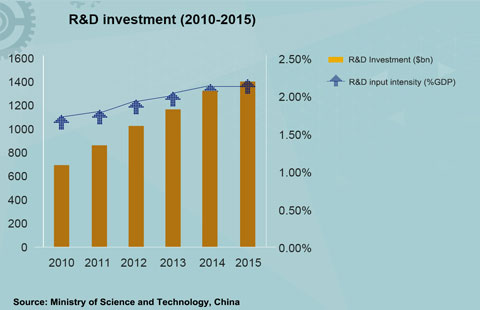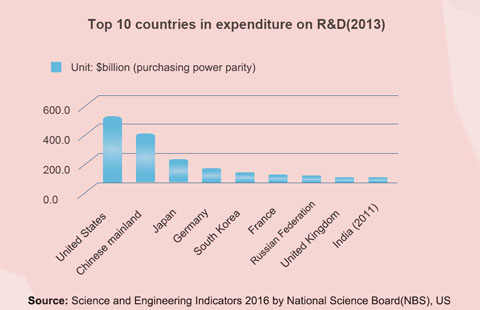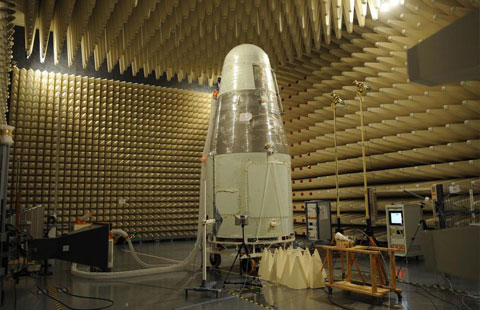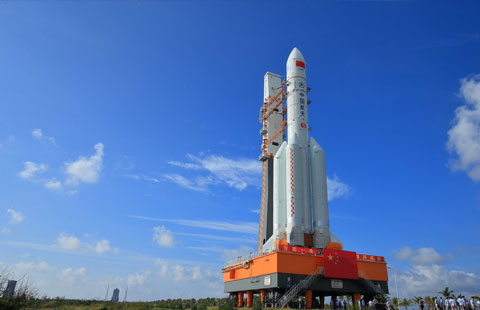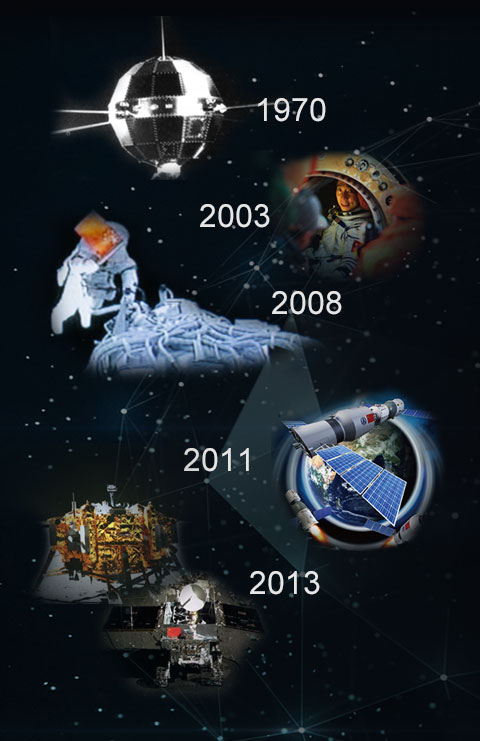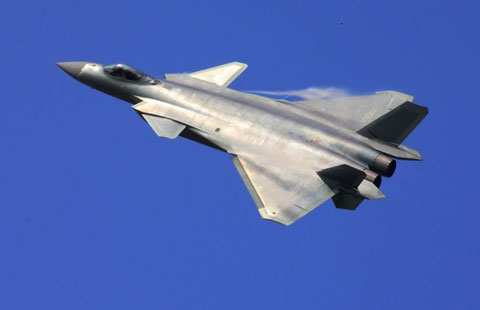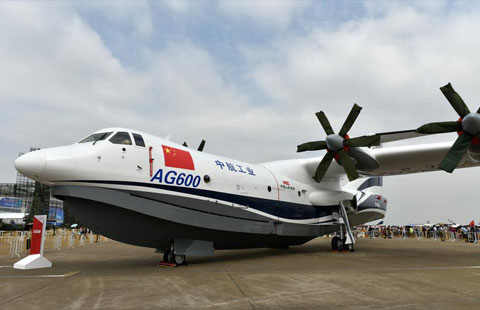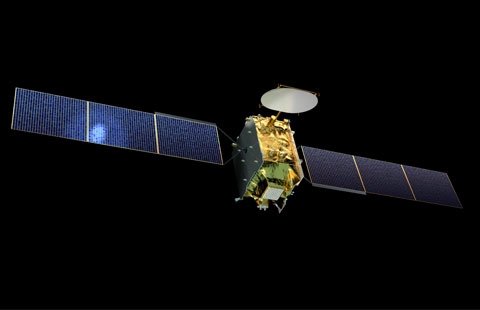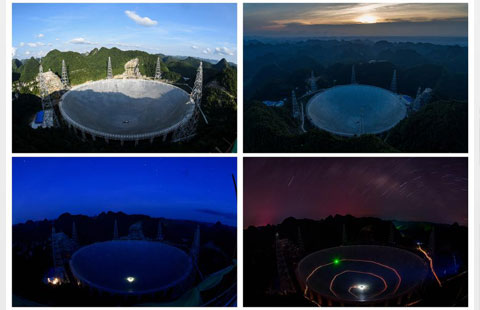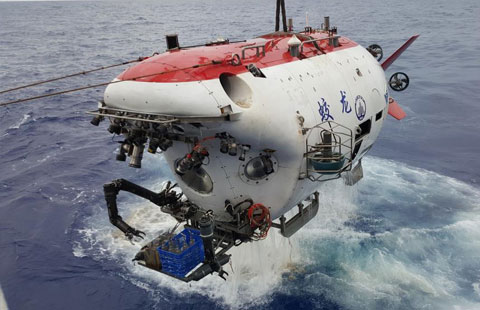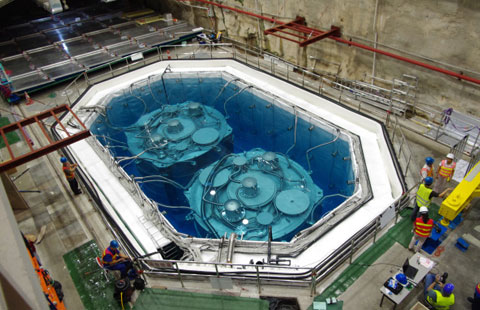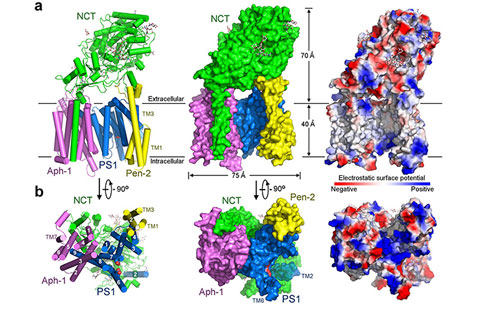Figures and facts
China’s investment in research and development is expected to reach 2.5% of GDP, and the contribution of scientific and technological advances toward economic growth should come to reach 60%.
--- The 13th Five-Year Plan of China (2016-2020)
The central government's commitment is aimed at making China a leading power in science and technology by the middle of the century, or around the 100th anniversary of the People's Republic of China.
---President Xi Jinping’s address at a biennial conference of the country's two top think tanks on May 31
Three-step goals: To develop China into an innovation-oriented country by 2020, to place China among top innovation-oriented countries by 2030, and to turn China into a technological innovation powerhouse by 2025.
--- Outline of the National Strategy of Innovation-Driven Development released by the Ministry of Science and Technology on May 23
China is now decisively the second-largest performer of research and development.
--- The US-based National Science Board that advises the President and Congress on science and engineering policy issues.
Click here for more charts
Tiangong II, launched on Sept 15, 2016
The space lab is 10.4 meters high, 3.35 meters in diameter and weighs 8.6 metric tons. It has two cabins – one acts as the astronauts' living quarters and the other contains solar panels, storage batteries, propellant and engines.
Its major tasks are to accommodate astronauts' medium-length stay in it and test life-support technologies, to demonstrate in-orbit refueling and repair plans and to conduct experiments pertaining to space sciences.
Shenzhou XI, launched on Oct 17 and returned on Nov 18, 2016
It carries astronauts Jing Haipeng and Chen Dong to dock with Tiangong II on Oct 19. Astronauts conduct medical experiments and space science experiments such as raising silkworms and planting vegetables in space.
The Shenzhou XI-Tiangong II mission was China's sixth manned spaceflight and is expected to pave the way for a permanent space station, which the country plans to start building in 2018 and put into service in about 2022.
SJ-10 retrievable satellite, launched on April 6 and recovered on April 18, 2016
The Shenzhou XI-Tiangong II mission was China's sixth manned spaceflight and is expected to pave the way for a permanent space station, which the country plans to start building in 2018 and put into service in about 2022.
Long March 5, heavy-lift two-stage rocket, launched on Nov 3, 2016
The 57-meter-tall rocket has a liftoff weight of 870 metric tons, and a maximum payload capacity of 25 tons to low Earth orbit and 14 tons to geosynchronous transfer orbit.
Long March 5 will enable China to put its future manned station into space and send unmanned probes to Mars. It is scheduled to carry the Chang'e-5 lunar probe around 2017.
Five memorable moments
First satellite - Dongfanghong-1, on April 24, 1970
Fifth nation to join the "space club"
First manned spacecraft (2003)
Yang Liwei, 38, spends 21 hours in orbit
Third country ever to send a human into space
First spacewalk by Zhai Zhigang, 42, (2008)
Third country to leave footprint in the universe
First space lab Tiangong-1 (2011)
Preparation to put a permanent manned space station into service around 2022
First lunar "soft" landing - lunar probe Chang'e-3 (2013)
With lunar rover "Yutu" (Jade Rabbit) for surveying the moon's geological structure and surface substances and looking for natural resources
Ambitious plans
2017 - Send lunar probe Chang'e 5 to land on the moon and return with lunar samples.
2020 - Complete aerospace projects currently under way, including manned space programs, lunar probes, the BeiDou Navigation Satellite System, and the Gaofen observation satellite program. China also intends to send an unmanned probe to Mars that is expected to orbit and land on the Red Planet and conduct scientific research.
2025 - Will complete construction of national civilian space infrastructure.
2036 - Plan to send astronauts to the moon under its manned lunar exploration program. To date, only the United States has successfully landed astronauts on the moon.
C919, China's first domestically designed large passenger jetliner
The single-aisle, 168-passenger, twin-engine jet has successfully completed key tests on its engines, marking the final stage of its testing phase. Its first test flight will be conducted later this year or in early 2017.
It is expected to drive the growth of related manufacturing industries, including airplane materials manufacturing, electronic engineering, automation and mechanical manufacturing.
J-20, China's advanced stealth fighter, first public debut on Nov 1, 2016
The twin-engine J-20 features a host of cutting-edge technologies, such as an optical system that allows pilots to detect and track enemy aircraft and missiles in every direction simultaneously.
The J-20 will further improve China's combat capability and enable the air force to better safeguard the nation's sovereignty, national security and territorial integrity.
AG600, the world’s largest amphibious aircraft, its debut on Oct 30, 2016
The AG600 measures 37 m in length, 38.8 m in wingspan, and 12.1 m in height. With four turboprop engines, it can draw onboard 12 tons of water within 20 seconds, with a maximum take-off weight of 53.5 tons.
Besides forest firefighting and water rescue operations, it can be refitted for marine environmental monitoring and support and safe travel guarantee for navigations along the Maritime Silk Road.
Y-20, China's largest homegrown transport aircraft, joined the PLA on July 6, 2016
The Y-20 has a maximum payload of 66 tons and a maximum takeoff weight of around 200 tonnes. It measures 47 m in length, 50 m in wingspan and 15 m in height. Fully loaded, the Y-20 can fly 3,700 km nonstop from Harbin in Heilongjiang province to Lhasa in the Tibet autonomous region.
It represents that China has gained the capacity of long-range transportation, and entered the world's "large aircraft club" with all members as aviation powers.
World's first quantum communication satellite
Micius, the world's first quantum communication satellite developed by China, was launched into space on Aug 16, 2016.
The 631-kilogram satellite, named after the ancient Chinese philosopher and scientist Micius, operates 500 kilometers above Earth for at least two years.
The satellite is dedicated to quantum science experiments, and it will serve as evidence that China is leading the world to achieve satellite-earth quantum communication.
The satellite is dedicated to quantum science experiments, and it will serve as evidence that China is leading the world to achieve satellite-earth quantum communication.
Taking a big step in building a space-based quantum communication network that would be virtually uncrackable.
World's longest quantum communication network
China will complete and put into service the world's longest quantum communication network stretching 2,000km from Beijing to Shanghai in the second half of this year.
Government agencies and banks in cities along the route can use it first. By 2030, the Chinese network would be extended worldwide.
Tiangong-2, which can enable two astronauts to live in space for 30 days, can receive manned and cargo spaceships and will be used for testing systems and processes for space stays and refueling.
In 2012, China built the world's first metropolitan area quantum network in Hefei, linking 46 nodes to allow real-time voice communications, text messages and file transfers.
Breakthrough
Five-hundred-meter Aperture Spherical Telescope (FAST), or Tianyan, is the world's largest of its kind, overtaking Puerto Rico's Arecibo Observatory, which is 300 meters in diameter. FAST's large hemispheric surface is made up of 4,450 1.3-millimeter-thin reflecting panels, each weighing 427 to 482.5 kilograms. It is 10 times more sensitive than the steerable 100-meter telescope near Bonn, Germany.
Scientific application
FAST can detect weak radio signals from the outer space, even beyond our own solar system and will be helpful in areas such as large-scale physics of the universe and understanding the nature of dark matter.
It will also contribute to the international search for intelligent extraterrestrial life and could also be used to track spacecraft involved in China's space program.
It is capable of identifying gravitational waves, detecting radio emissions from the outer reaches of space and listening for signs of intelligent extraterrestrial life.
Construction and cost
With an investment of 1.2 billion yuan ($185 million), this gigantic project started in 2011, 17 years after it was proposed by Chinese astronomers.
‘Zhang Jian’
On March 24, China launched the country's first ship "Zhang Jian" specifically designed for carrying submersible.
The ship is 97 meters long and 17.8 meters wide. It is designed to carry 60 people and has a 15,000-nautical mile range.
The ship will control Rainbow Fish, China's first 11,000-meter robotic submersible, to try to get 8,000 meters under the surface.
Rainbow Fish, a submersible capable of diving to 11,000 meters, accomplished an 18-hour research under a 6748-meter-deep survey location at the New Britain Trench of the Solomon Sea, on Aug 18, 2016.
Jiaolong
The current Chinese manned diving record was made by Jiaolong, a manned deep-sea research submersible out of China's own independent R&D.
It reached 7,062 meters in the Mariana Trench in the western Pacific Ocean in June 2012, a record-breaking depth range of any manned research vehicle in the world.
It completes the last diving mission at Yap Trench in western Pacific Ocean, reaching 6,579 meters under the sea on May 22, 2016.
Daya Bay Reactor Neutrino Experiment
Located in southern China's Guangdong province, the Daya Bay Reactor Neutrino Experiment, famous for studying neutrino mixing, is branching into a new area of neutrino physics. In March 2012, the laboratory announced a precise measurement of the last of the unsolved neutrino "mixing angles," which determines the way neutrinos oscillate. The groundbreaking results promise new insight into why ordinary matter survived after the big bang to form everything visible in our current universe.
Future plan
Earlier this year, the government launched a new neutrino experimental facility project in Jiangmen city, Guangdong province, to replace the existing Daya Bay Reactor Neutrino Experiment by 2020, with the aim of ranking the masses of the three different types of neutrinos.
Although the particle itself is neutral, it is part of a "trinity" consisting of three types of neutrino - the electron, muon and tau neutrinos. Under certain circumstances, each type can transform itself into one of the other two.
With a budget of 2 billion yuan ($310 million), the Jiangmen Underground Neutrino Observatory, also known as JUNO, will dwarf the Daya Bay project.
Bio-engineering applied in organ transplant
Bio-engineered corneas made from pigs' eyes may help millions of Chinese patients to see again, ophthalmologists have said. A 14-year-old boy regained his sight after receiving a pig cornea transplant on Feb 25, according to Yuan Jin of Sun Yat-sen University ophthalmology center, in the southern Chinese city of Guangzhou.
Treatment of major diseases
China has the largest number of Alzheimer patients in the world but it has been making strides to join the world's pace in unlocking the medical mystery.
On May 11, Zhang Baorong, a member of Alzheimer’s Disease Chinese, announced that his research team had found a new protein called "IL-33", which may reverse the symptoms of Alzheimer, a chronic neurodegenerative disease that usually starts slowly and gets worse over time.
If the clinical trial tests successfully, their finding can help 20 percent to 30 percent of patients with less-serious Alzheimer to recover fully.
Three-year 'Internet Plus' artificial intelligence plan
China will speed up the development of its artificial intelligence (AI) sector and create a market worth more than 100 billion yuan ($15.26 billion) over the next three years.
By 2018, China shall build platforms for fundamental AI resources and innovation and make breakthroughs on basic core technology to be in line with global AI technology and industries by 2018.
The country will cultivate and develop emerging artificial intelligence industries, promote innovation in intelligent products and enhance the intelligence level of terminal products.
The program will involve key projects such as intelligent home appliances, smart automobiles, intelligent unmanned systems, intelligent wearable devices and robots.
Two Robot hit on social media
Robot Monk
Buddhist monasteries are often associated with tradition and the ancient past but one located 30 kilometers northwest of Beijing's Zhongguancun - China's innovation hub - has become famous for looking to the future with its use of cutting-edge technology and for its latest recruit, a robot.
'Jia Jia'
A new interactive robot, named Jia Jia, looking like a real woman, was showcased at the 2016 China (Shanghai) International Technology Fair from April 21 to 23.
Supercomputing - TaihuLight
The research team of the Sunway TaihuLight, a Wuxi-made supercomputer, was announced as the winner of the 2016 ACM Gordon Bell Prize in Salt Lake City on Nov 17, 2016.
The prize is known as the equivalent of the Nobel Prize for the field of high-performance computing applications. This is the first time Chinese researchers have been awarded the prize.
The supercomputer is launched on June 20, 2016, and can perform a staggering 93 petaflops/s (quadrillions of calculations per second). Its processors and technology all designed in China.
